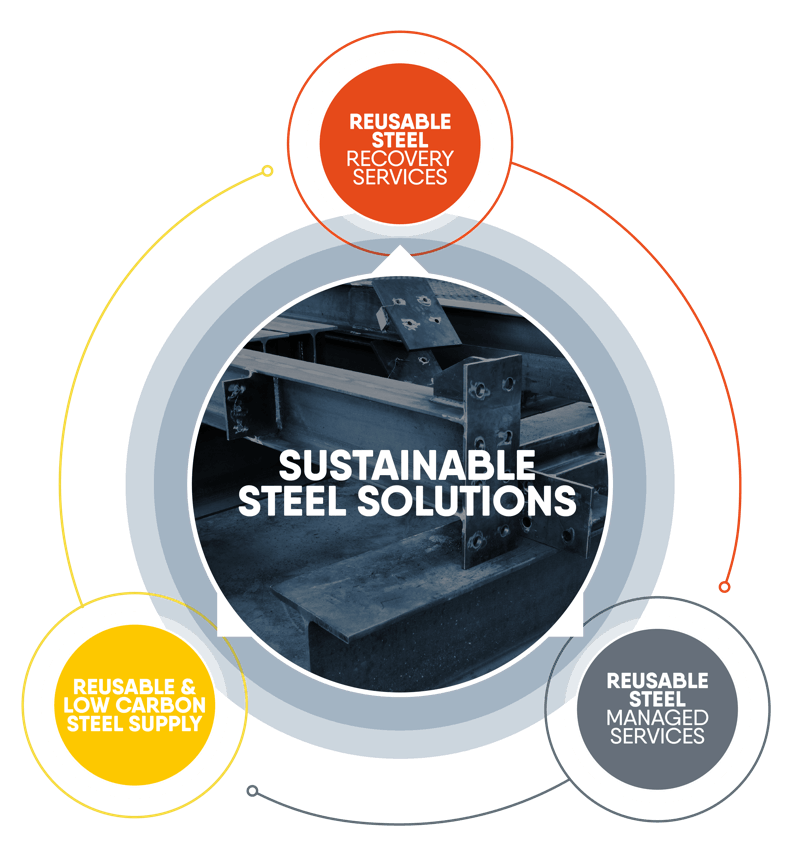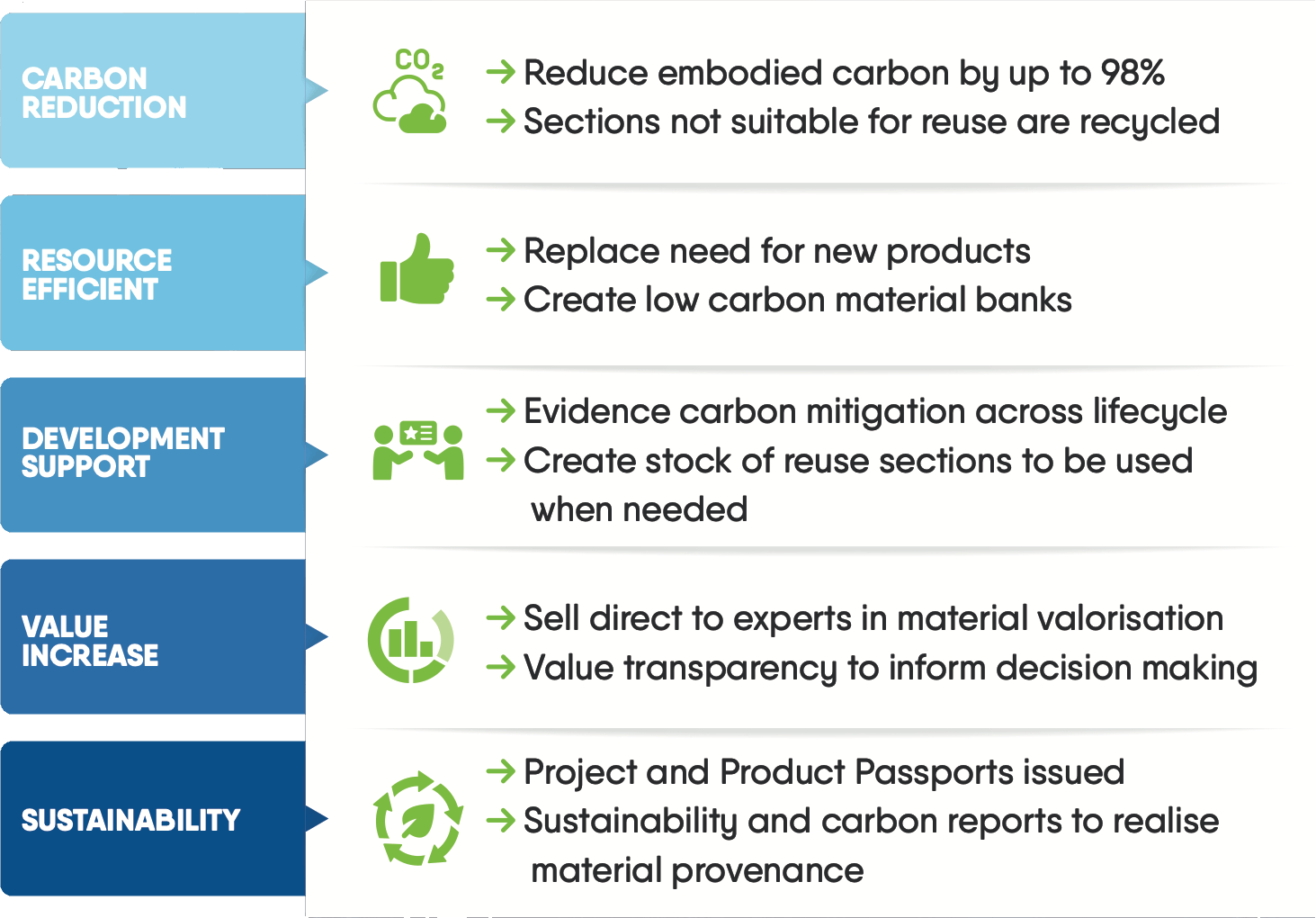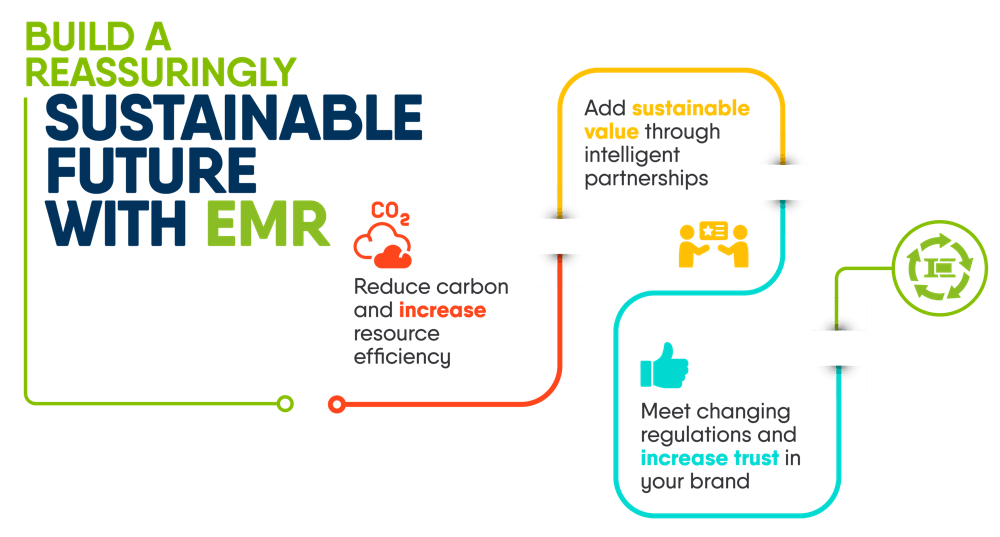CHOOSE
A DIFFERENT TERRITORY
Building a reassuringly sustainable future.
OUR AMBITION IS TO BE THE LEADING SUPPLIER OF ULTRA-LOW CARBON REUSABLE STEEL THAT DRAMATICALLY REDUCES EMBODIED CARBON IN THE CONSTRUCTION SECTOR.

EMR’s Reusable Steels Solutions have been designed to increase resource efficiency whilst delivering a transformational reduction in carbon.
By reclaiming steel from existing buildings and remanufacturing it for reuse, we reduce carbon emissions by up to 97.5%. Click here for information on the ultra-low carbon performance of our Reusable Steel sections.
Reusable Steels is simply high-quality, low-carbon steel, readily available for reuse.
Contact us
We have developed three complementary services that can be delivered as an overall integrated solution or as three separate activities depending on project need:
Steel recovery services: Our team of experts will work with you to develop a Steel Recovery Plan that will identify steel sections that can be economically harvested from your building before being tested and surveyed prior to their subsequent conversion into ultra-low carbon Reusable Steel sections.
Low carbon steel supply: Whilst we are able to match and supply you with Reusable Steel sections that fulfil your steelwork requirements, we can also combine Reusable Steel sections with low carbon new steel sections and provide you with a blend of sections with an extremely low overall carbon performance to further improve the sustainability of your project.
Managed services: We can receive, test, remanufacture, cut to length and shot-blast Reusable Steel sections recovered from one of your buildings before storing them ready to be called off and dispatched to your chosen steel fabricator.
Our recovery and reuse process

Why EMR Reusable Steels Solutions


Contact our Reusable Steels team and start building a reassuringly sustainable future.
Contact us